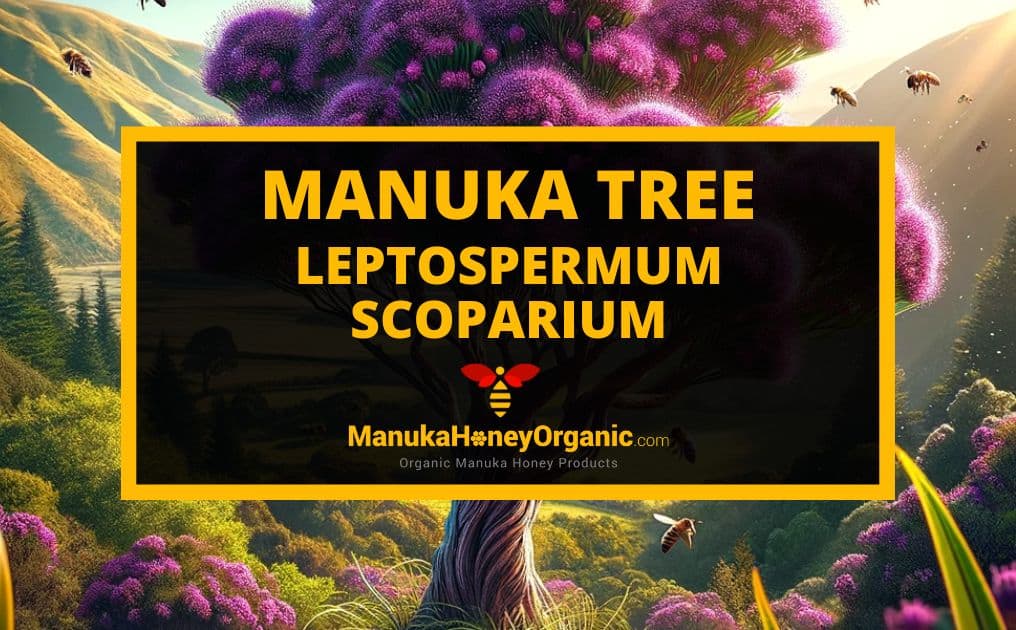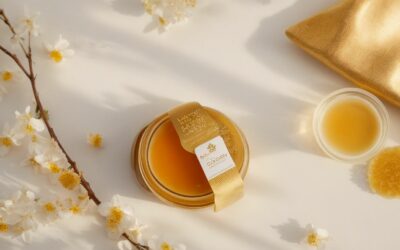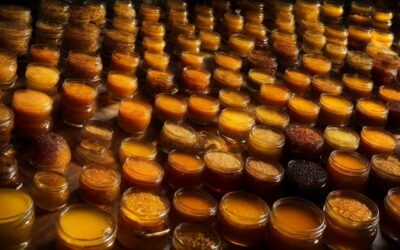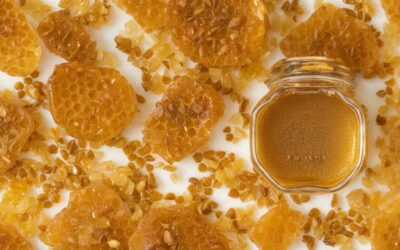From its captivating aesthetic to the fact that it can grow in even extreme climates, the manuka tree is an impressive species of flora worthy of admiration. In this post, learn about what makes this special type of tree so noteworthy and discover how people have employed its benefits throughout history as well as today for wellness purposes.
Key Takeaways
- The Manuka tree is native to New Zealand & Australia, traditionally used by Maori people for tools & containers.
- Growing your own Manuka tree is easy with proper sun/soil drainage. Products like honey, tea and essential oils offer health benefits.
- The species’ resilience makes it ideal for reforestation and environmental stability, aiding local ecosystems in the process!
The Wonders of Manuka Tree
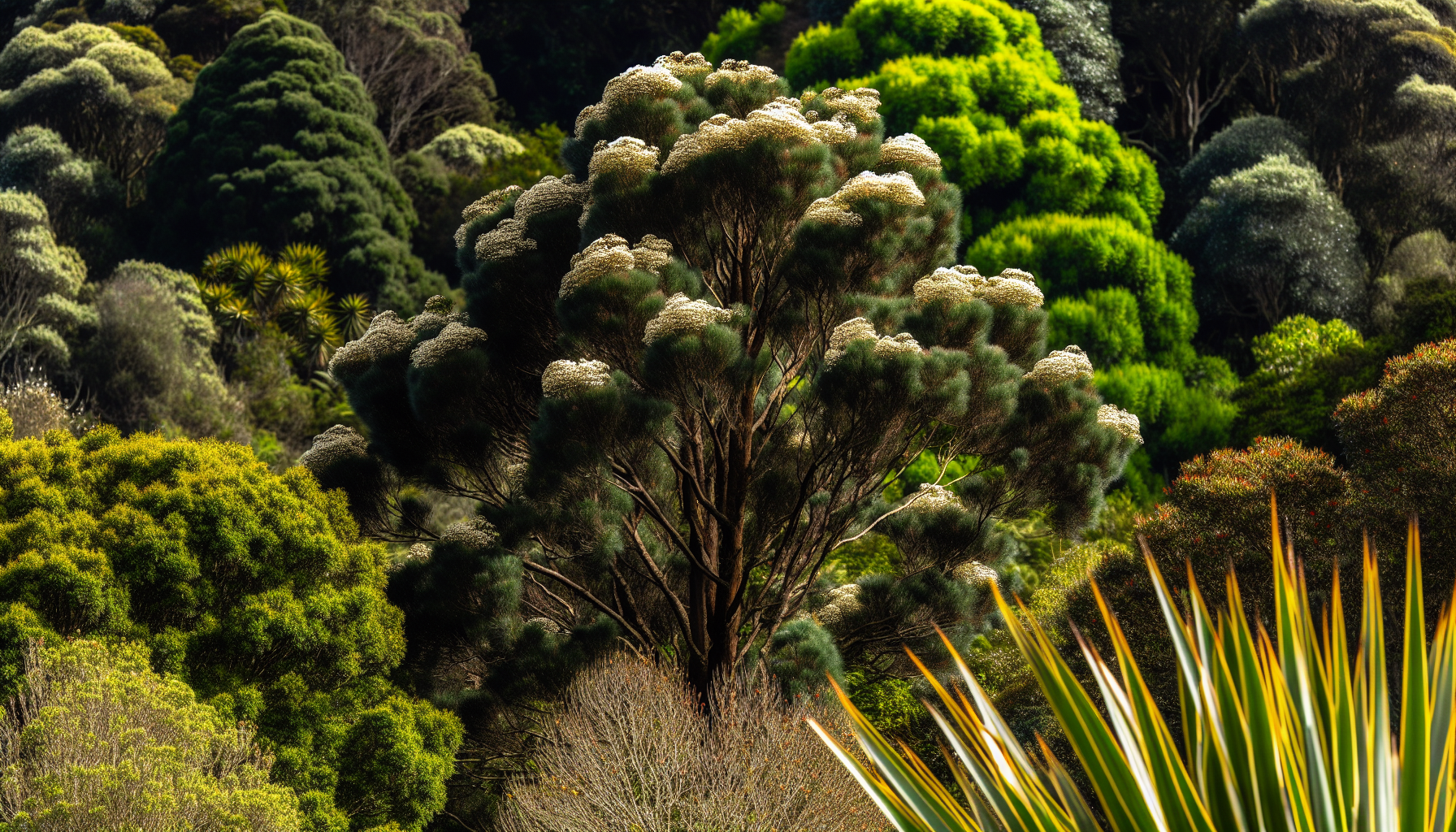
The Manuka shrub, also recognized as the New Zealand tea tree or Australian tea tree, is a unique evergreen type of plant that grows in both Australia and New Zealand.
Its attractive white and pink flowers with an aromatic scent make it not only beautiful to behold but are important for producing its prized honey – Manuka. But this fascinating bush has more than meets the eye since not just its nectar, but its bark can be utilized in various ways due to the essential oils found within them.
This tall species stretches up anywhere between seven feet right through 16 feet at times even reaching thirty! During summer these plants come alive by calling forth honeybees lured by their blossom which sticks around for two-six weeks when bees buzz over creating sweetly sought after manuka honey making many who savor this treat very grateful indeed!
Origins and Habitat
The Leptospermum scoparium, also known as the broom tea tree and more commonly associated with the Manuka plant of New Zealand and Australia, is an incredibly resilient species that can cope with a variety of different climates.
It’s capable of thriving in damp wetlands alongside dry hillsides made up of gravel – not to mention it has impressive fire-resistant properties which protect it against wildfires!
The surrounding environment affects both its aromas and flowering seasons. They are formed by climate conditions coupled with genes inherited from their mother plant. All this makes them truly remarkable plants indeed!
Traditional Uses by Maori People
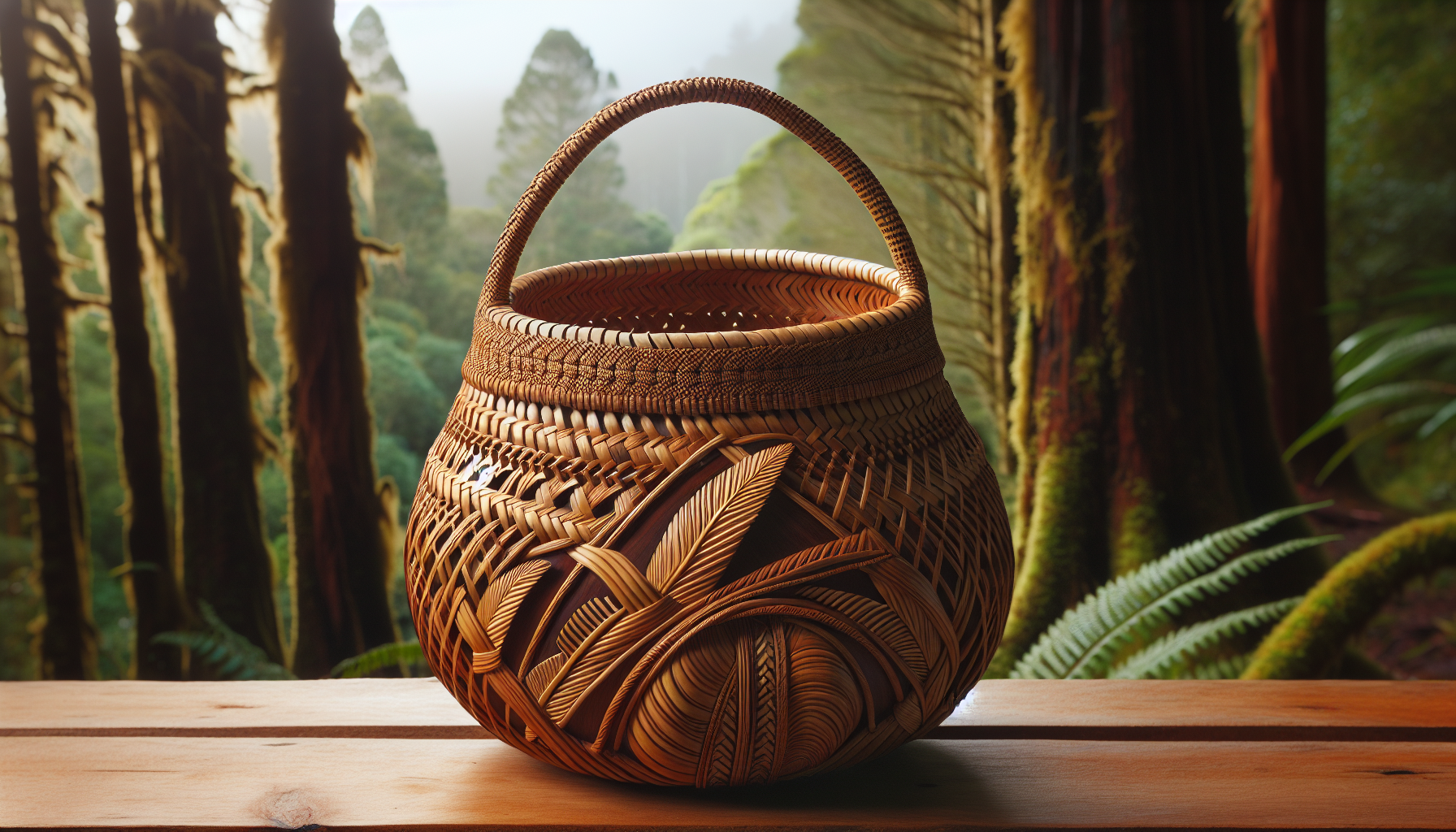
The Manuka tree has been of use to the Maori people of New Zealand since ancient times. They have created many things out of its wood, such as eel baskets and crayfish pots for traditional fishing activities at p tuna.
Young plants with their flexibility were also woven into water containers and paddles. The manuka wood was especially suitable for crafting these items due to its strength, durability and suppleness.
Growing Your Own Manuka Tree
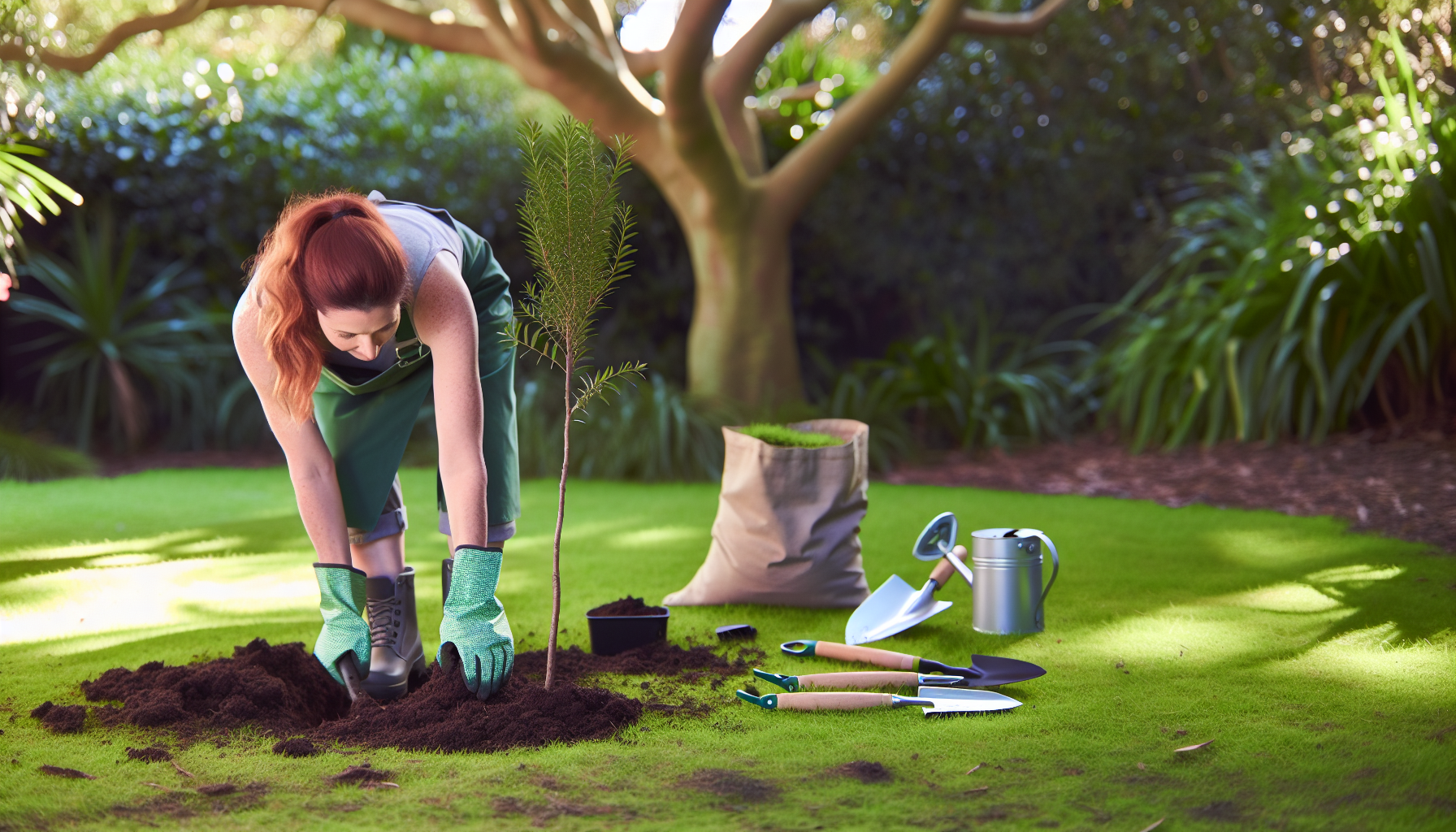
Growing the New Zealand Manuka tree can be relatively straightforward. Found in both the North and South Islands, these trees thrive when provided with ample sunlight and well-draining soils. For potted specimens, sand mixes prove effective soil substrates for cultivation purposes.
Proper irrigation is necessary to ensure healthy growth. Younger trees need more frequent watering while established ones prefer slightly moderate moisture levels instead. Be sure to check routinely for pests such as webbing caterpillars, borers or scales which could cause issues with your manuka tree’s wellbeing.
Planting and Propagation
The steps needed for success are clear for those wishing to cultivate Manuka trees. Firstly, provide adequate sunlight and drainage in order for them to thrive. These plants do not require heavy fertilization, but they may need some every couple of years if soil quality is poor. It’s important to note that bees native to the area rely on these particular trees when pollinating so make sure you keep this in mind as well!
Propagation options include collecting seeds from a current tree or taking semi-hardwood cuttings. Regarding seed collection proceed by mashing then washing the fruit pulp before sowing lightly onto a raised bed mix while taking 10-15cm cuttings with prior root hormone dipping necessary.
Follow by replanting into free draining mixture combined with bottom heat present until roots grow large enough resulting allowing transplanting processes forward – overall providing two reliable means of propagation methods offering their own individual advantages either way one chooses.
Pruning and Maintenance
Pruning a Manuka tree is best done when its flowering period comes to an end. To preserve the shape and encourage more blooms, it’s important that regular pruning takes place. Cut away any lifeless or damaged branches as well as lightly trimming with hedge shears annually for maximum effect.
To distinguish between live wood and dead on a Manuka tree look out for healthy characteristics like close branching and small leaves. Also, if there are areas where bark falls naturally, this indicates good health too! Dead wood may feel fragile. Once you flex it – watch closely your manuka tree for signs such as dying branches, discolored leaves, wilting plants plus pests & black sooty mold fungi issues.
Health Benefits of Manuka Tree Products
The Manuka tree provides numerous natural health benefits through its products. Its honey, for instance, is well known for containing leptosperin and MGO, aiding digestion and immunity strength. Making a tea with the leaves of this tree can benefit one’s antioxidant levels while also promoting relaxation, another example of how these components work in concert to better our wellbeing.
The essential oils from this special species are powerful antibacterial agents as well as possessing anti-inflammatory effects. Thus they have many skincare applications combined with an aromatherapy effect too! All elements come together making these items superfoods that promote overall wellness – something so valuable due to their unique qualities.
Manuka Honey
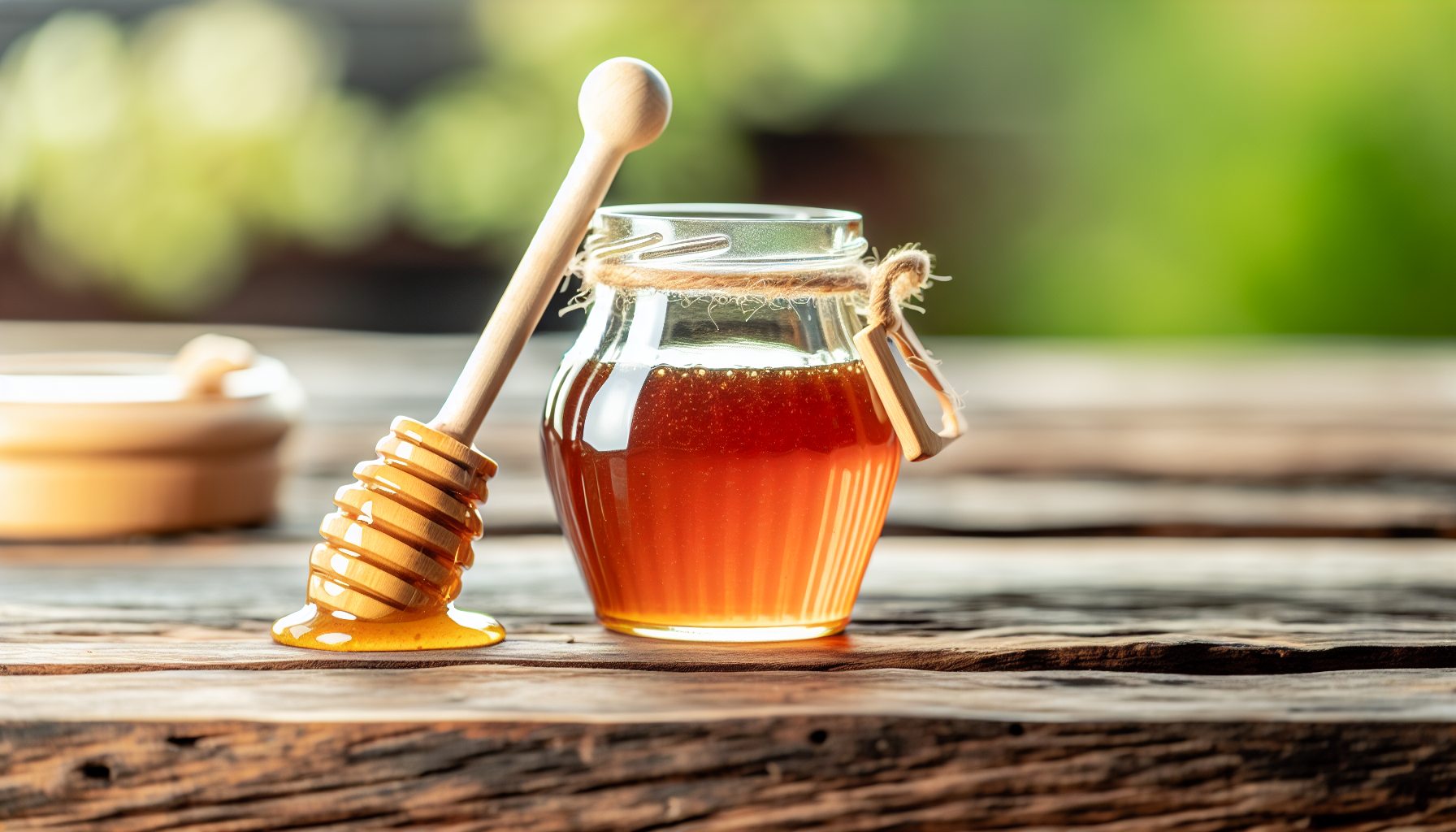
Manuka honey is far more than your everyday run-of-the-mill sweetener. Its exclusive nutritional components that include leptosperin and MGO, make it an effective method to boost digestive health, strengthen immune systems, heal wounds, combat infections, and calm a sore throat – all thanks to its antioxidants and anti-inflammatory benefits.
Methylglyoxal levels determine Manuka’s potency: higher concentrations (like the MGO850) are stronger while milder varieties can be found with lower concentration rates such as the highly accessible yet less powerful MGO200 type of manuka honey.
Essential Oils
Manuka essential oils are the result of steam distilling various compounds found in Manuka tree – alpha-pinene, beta-pinene, myrcene, limonene 1.8 cineole linalool and leptospermone – to create an oil with powerful antibacterial properties that can even be used against some resilient bacteria like Methicillin Resistant Staphylococcus and Salmonella typhimurium.
The process is gentle yet effective. Other traditional methods for making different types of essential oils use similar techniques but require a much more complicated setup than simple steaming does when it comes to producing manuka extracts.
This noninvasive method yields potent antimicrobial agents contained within this special type of oil, which makes manuka one of the most sought after and beneficial natural products available today!
Manuka Tea
Brewing Manuka tea is a centuries-old practice with many health benefits. Derived from the leaves of this special tree, it has anti-inflammatory and antioxidant powers which are thought to assist in wound healing as well as aid oral hygiene while soothing sore throats or treating acne breakouts.
To make Manuka tea you just need to infuse some dried manuka leaves (or use an extract) along with other ingredients such as cinnamon, ginger and lemon then strain them into hot water, adding some delicious honey makes it even tastier! This will give your drink a sweet flavor combined with slight bitterness plus acidic notes for complexity on the tongue.
Manuka Tree in Modern Medicine and Research

The Manuka tree has been the subject of modern medicine and research studies due to its high phenolic content and antioxidant capacity. Its honey was found to be effective against bacteria such as Staphylococcus aureus or Helicobacter pylori, boasting powerful antimicrobial capabilities with other types of honey.
Essential oil obtained from this plant is being studied for use in medicinal treatments thanks to it having antiseptic, antibacterial and antifungal effects. Investigations are still ongoing into different uses that could come about from products derived from the Manuka tree concerning various health conditions.
Antibacterial Activity
The antibacterial abilities of Manuka tree products are quite remarkable, especially when it comes to manuka honey. This kind of honey boasts a higher phenolic content and MGO concentration that make it especially useful for combating bacteria like Staphylococcus aureus or Helicobacter pylori, as well as combining with antibiotics in order to fight off multidrug-resistant strains.
Manuka essential oil also offers reliable protection against the growth of infectious agents such as Listeria monocytogenes and S. Aureus while successfully eliminating periodontopathic microorganisms too. Thus providing another natural alternative for different bacterial infections control measures.
Potential Therapeutic Applications
Manuka honey has a plethora of therapeutic benefits. Its antibacterial, anti-inflammatory and antioxidant properties have been found to effectively heal wounds and burns, soothe sore throats and provide oral health promotion through increased energy levels.
Similarly, the essential oil derived from Manuka trees is incredibly beneficial for skin wellbeing due to its potent bactericidal activity alongside strong abilities in reducing inflammation whilst facilitating wound healing and minimising acne along with other irritations on top of slowing down sun damage caused aging effects too!
Finally, there are also several promising findings when it comes to using Manuka tea, which includes accelerated healing speed after minor injuries & burns. Helping maintain mouth hygiene plus providing relief for pharynx ailments such as throat irritation associated problems like pimples etc.
Nevertheless, research must be conducted into these respective applications before being accepted at face value scientifically speaking.
Manuka Tree: A Sustainable Solution
The Manuka tree has been lauded for its numerous health advantages, but it can also bring sustainability to various environmental problems. It is incredibly hardy and not easily deterred by land clearance or cold temperatures, making the plant a prime candidate in forest restoration campaigns.
It works tirelessly towards preserving soil integrity with ample shade that helps more vulnerable species thrive within their ecosystem. As such, this remarkable vegetation serves as an awe-inspiring model of nature’s capacity for healthy equilibrium if we provide ideal living conditions accordingly.
Resilience and Adaptability
The unique hardiness of the Manuka tree is reflected in its impressive ability to adapt to various conditions. This allows it to survive even through rough terrain, steep topography and high humidity environments that may be either wet or dry with regular watering.
Its bark can withstand extreme temperatures both hot and cold due largely to volatile organic compounds released by the species of red wood specific found within its inner layer. In particular, this characteristic core bark, which offers strength previously unseen across other plants, truly shows how formidable these trees are.
Supporting Local Ecosystems
The Manuka tree, an ecological hero, is key to combating soil erosion. Its dense canopy and winding roots prevent the earth from being washed away during inclement weather conditions.
By providing shade for vulnerable plants in scorching sun or gusty winds, these trees help nurture native vegetation where other species might fail, aiding their growth with healthier soils due to the robust root system of a manuka tree.
Summary
The Manuka tree is an astonishing example of our ecosystem’s complexity, with its remarkable strength to endure adverse conditions and a diversity of applications offering outstanding health benefits. It is certainly deserving of respect for the invaluable contribution it makes to nature. We invite you to take this knowledge as inspiration in order to discover the amazing wonders that are available nearby in your own backyard!
Frequently Asked Questions
Can you grow manuka trees in the US?
Manuka trees can be cultivated in the US but only found within USDA plant hardiness zones 9 and 10, which covers the southernmost parts of continental America as well as Hawaii. Its nectar, collected for production of manuka honey, is also an integral part of its cultivation process.
What is special about the manuka tree?
Manuka trees possess an extraordinary combination of components, such as volatile oils, flavonoids, tannins and triterpenes. This special composition gives the tree antibacterial properties. To being anti-fungal, antimicrobial and having inflammation-reducing powers. In other words, manuka is a natural powerhouse full of benefits!
Are manuka trees invasive?
The manuka tree has grown to become a nuisance in some places, such as Hawaii, and is considered an issue. To combat this threat of becoming weedy, one should think about using double-flowered cultivars instead. The aim would be lessening the chances of the species taking over more land than it already does.
Are tea tree and manuka the same?
Tea tree and manuka are not interchangeable. Tea tree oil is distilled from the leaves of the Melaleuca plant, while manuka oil comes from parts of the Leptospermum scoparium species of shrub or small tree. Both tea trees and manukas have been used in medicine for centuries. They produce different oils due to their varying origins.
How does the Manuka tree support local ecosystems?
The Manuka tree is a beneficial contributor to the surrounding habitat, preventing soil erosion and offering shade for more fragile plants. It enhances the quality of soils, which helps other native vegetation grow strong and boosts biodiversity in this region with many different species. All these benefits create an even healthier ecosystem where all its inhabitants can flourish together.
I’m a Manuka honey enthusiast and creator of Manuka Honey Organic, a blog where I share my journey with authentic Manuka honey from New Zealand. I want everyone to learn about the healing powers of Manuka honey.

